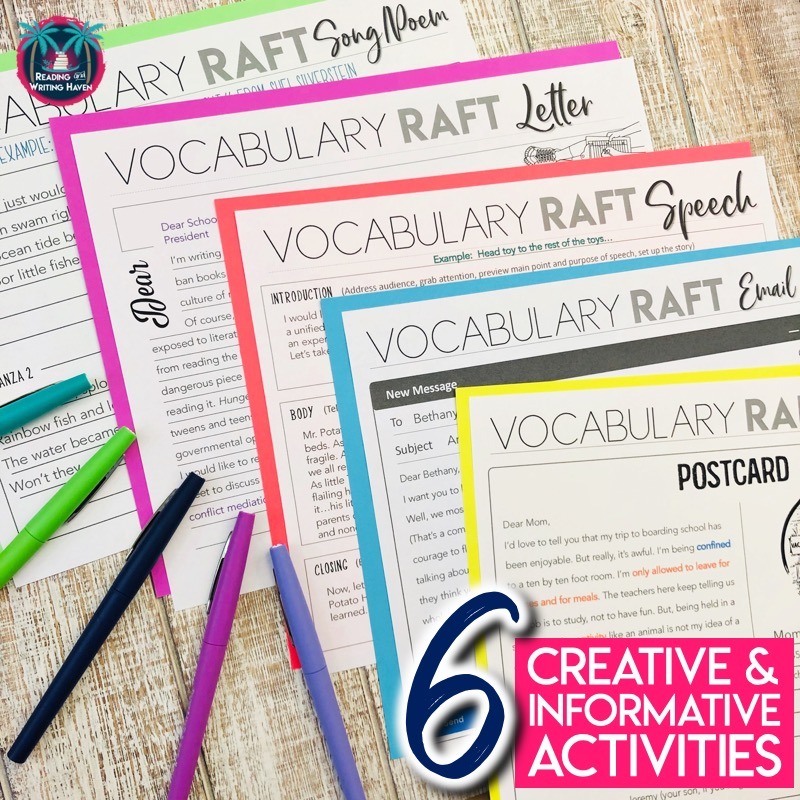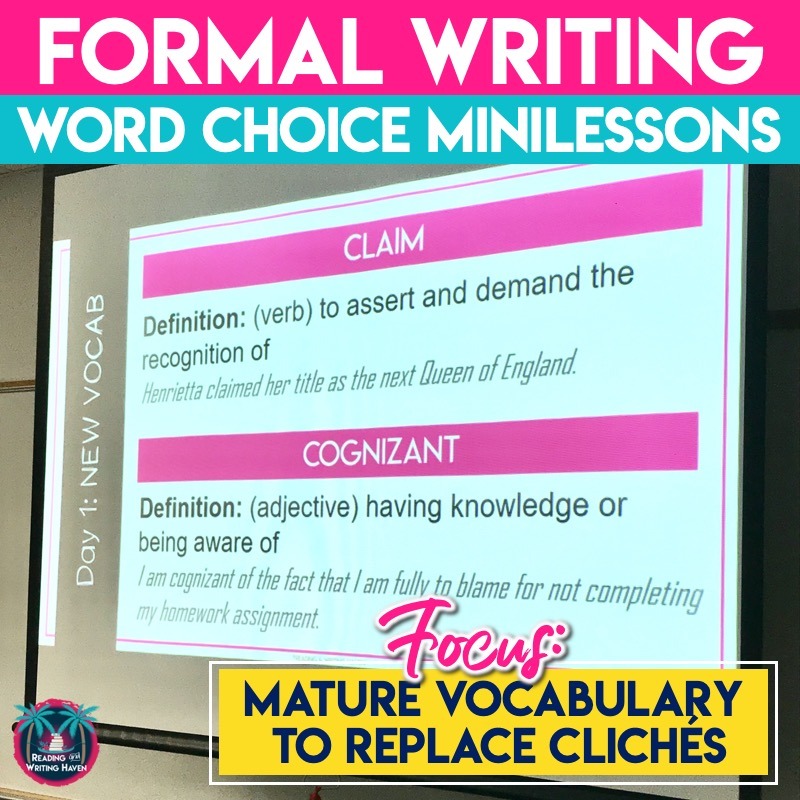Integrated Vocabulary: Teaching Vocab in the Context of Reading and Writing
Do you ever feel like there is something missing from your vocabulary instruction? Traditionally, students are given a list of words, and they memorize the definitions. Lists of words are not always bad, nor is memorization. However, isolated vocabulary instruction is not best practice. When students can see how words transfer to other contexts, the experience is more impactful. Is integrated vocabulary the missing link you need?
Ideally, students’ curiosity will drive the learning experience. Engaged students often ask what unfamiliar words mean. This happens often when I read with my own children at home. In a classroom setting, however, we can’t always predict when students’ natural sense of wonder will lead us to a teachable moment. So, how can we set up valuable learning experiences that show students how vocabulary knowledge transfers to both reading and writing? I have some ideas.
WORD WALLS
Word walls are an excellent way to weave integrated vocabulary instruction into your curriculum. Not only can you use them to highlight words in texts students are reading, but also as springboards for precise word choice in writing.
Reading
Use word walls to highlight words students find while reading. Students can help to generate the lists! It’s simple. Ask them to skim the story for unfamiliar words. If you’re pressed for time, compile a list for them to choose from. With fiction, be sure to focus on words that will deepen their understanding of the character, conflict, setting, mood, plot, or theme. Informational text words are more powerful if they relate to the main idea or an important supporting detail in the text.
Then, do some nominating! It’s easiest if you compile the words into one question on a Google form. For instance, Place a checkmark next to the five words you are most interested in learning more about. Then, list them. If you use the checkbox question format, you’ll easily be able to see which words to add to the word wall.
Writing
A common issue in student writing is informal or elementary word choice. Often, students use cliches and tired words because they don’t have a wide enough vocabulary to pick more precise words. To help students understand their options, we can target our vocabulary instruction to highlight specific overused words and phrases.
For instance, instead of the phrase “stepping up,” students might write “claim responsibility.” By adding high register vocabulary to a class word wall, students will have inspiration and formal writing reminders as they write and revise.
Students can also be involved in creating the display.
Not sure where to begin with a word wall? Here are some tips for making word walls meaningful.
THINK ALOUDS
Example Script
Think alouds are perfect for integrated vocabulary instruction. During a reading mini lesson or read aloud, take advantage of your captive audience by modeling how you think about words. Just let your internal dialogue flow. Here is an example from The Hunger Games.
When I wake up, the other side of the bed is cold. My finger stretch out, seeking Prim’s warmth but finding only the rough cover of the mattress. She must have had bad dreams and climbed in with our mother. Of course, she did. This is the day of the reaping.”
After reading this passage, pause. Say something like…
I’m not sure if I understand what the word reaping means. I feel like it might be important to the story because it is mentioned right at the beginning of the novel. I’ll go back and look for clues….
The entire paragraph feels chilled to me. The author uses words like cold, fingers stretching out (as if they are disconnected from the body), a rough mattress, and bad dreams. This context makes me think that the reaping, whatever it is, is a bad thing.
I notice reaping is preceded by the article “the,” so I think that it is a noun. Maybe it’s an event. I’ve looked for context clues, and I’ve also considered the part of speech and the connotation of the word. Now, I think I need to look it up.
The dictionary definition is “cut or gather, as in crops.” I doubt that this novel is about a farmer and his crops, so I’m guessing that whatever is being gathered or cut is more serious than corn and beans. Plus, the word “reap” without the -ing ending means to receive a reward or benefit. This makes me think that one party is going to be profiting off of the reaping, while others will be sacrificing something.
While I don’t know the exact meaning of the word yet, I have a lot better idea of what it might mean. I think if I keep reading, I’ll find out soon.
Standards
By modeling this way, we have just shown students how to think about an unfamiliar word. In doing so, we’ve also just covered several Common Core Language standards.
Students have heard an example of how they can determine or clarify the meaning of an unknown word. We’ve used context to help students gather clues about the meaning of the word reaping. We also broke the word down into its more basic parts, consulted reference materials, and checked an inferred meaning in a dictionary.
If you’ve never tried it before, this type of modeling works best when it’s planned, but it can also happen naturally if you feel inspired! The best part is that the planning time is slim, but the rewards are exponential.
WRITING EXTENSIONS
Looking to work on integrated vocabulary with writing, specifically? Ask students to use their vocabulary words when writing. Whether you’re doing a journal, task cards, essay, or something creative, many of the words students are studying would be appropriate in their writing. If the words don’t seem like they would fit naturally in students’ work, it might be time to revisit the list.
Tip: To make finding the words easier for you to spot check, just have students bold or highlight them.
If you teach a word a day, have students talk about how they would use each word in a current writing assignment after introducing it. I’ve always found writing sentences together as a class to be a powerful way to incorporate vocabulary in writing. Students are invested because they get to select the topic, and once we have come up with an entertaining sentence, everyone remembers it.
Some of the most engaging integrated vocabulary assignments I’ve used are word poems, school associations, RAFTS, responses to reading, and gallery walks…just to name a few. Want more details? Read this article.
And there you have it. Mini lesson think alouds, writing extensions, and word walls…three effective ways to transfer vocabulary instruction. Words are an important foundation for students’ love of both reading and writing. After all, the size of our vocabulary impacts how much we can communicate. That’s why integrated vocabulary instruction is imperative. Students need to enjoy it and see the relevance. For those who do, learning new words becomes a way of life.
READ NEXT:
-
10 Must-Teach Vocabulary Words
-
5 Brain-Based Vocabulary Activities
-
How to Increase Vocabulary Retention
-
Vocabulary Strategies that Accelerate Learning
-
Teaching Vocabulary: A How-To Manual
RELATED RESOURCE:
Looking for a way to help expand students’ vocabularies and build a more formal writing tone? Use this three-week unit, full of word choice mini lessons, to help keep the cliches away.



